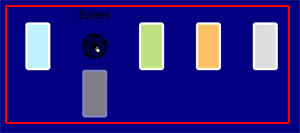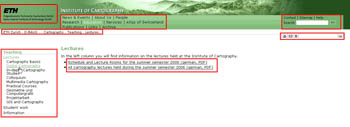1.2.3. Navigation Features
According to (1998) there exist three criteria that determine the navigability of a space:
- whether the navigator can discover or infer his present location;
- whether a route to the destination can be found (successful way finding occurs when the navigator can make correct navigation decisions that take him from his present location to a destination that fulfils his larger purpose.);
- how well the navigator can accumulate way finding experience in the space.
Good navigation tools guide the user through the information space of a product or web page, helping explore the content and functionalities of a project. Navigation enables exploring information spaces that are too large to be conveniently displayed in a single window. Efficient navigation tools provide both overview and detail. Ideally, multiple user profiles are supported: beginners, intermediates and experts. Experts need more precise and efficient navigation tools and a more direct access to the information offered. (Neumann 2005)
The following examples show a navigation structure for beginners and one
for experts. The first example is a screenshot of the Tirol Atlas for
children. That is why the navigation structure must be easy to learn. The
navigation is structured like a memory game. Each colour stands for a theme and
the name of the theme appears when moving the mouse over the coloured rectangle.
For children which learn better with colours than with written words, this
navigation structure makes sense.
The second example shows the web
site of the Institute of Cartography of the ETH. Computer skills of the visitors
of this site vary strongly. Therefore, we have several possibilities to browse
the site. A beginner may not find all navigation features. These features are
marked with red frames in the next image. Explore them on the web site of the
Institute of
Cartography!
 Navigation for Kids (Tirol Atlas) Navigation for Kids (Tirol Atlas) |
 Navigation for Adults (Institute of Cartography) Navigation for Adults (Institute of Cartography) |
There is no single best, one-size-fits-all navigation method available. The suitability of navigation tools depends on the audience, the user's experience and motivation, the task to solve and the type and size of the information space. A rough rule of thumb is that the larger and more complex the information space is, the more sophisticated and efficient the visualisation and navigation tools should be. Good visualisation systems provide multiple methods for solving the envisaged tasks, supporting different preferences and capabilities of their audience. (Neumann 2005)
Important is that good navigation provides history and allows to go back to previous information. Additionally, information that has already been visited should be marked.
Navigation tools help to solve spatio, temporal and thematic tasks more efficiently and provide both overview and detail.
